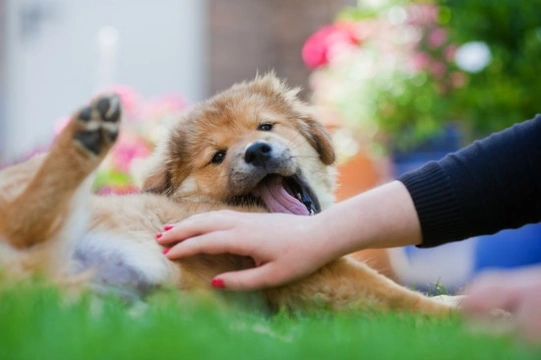
The importance of companionship and quality time for dogs
Dogs are extremely social animals, and do not thrive without adequate companionship. In the wild, dogs form packs and groups to provide for this need, but in a domestic setting, plenty of time spent with their favourite people is vital to them, even if they have another dog as a companion too.
Every dog owner knows that dogs are a high-maintenance pet that cannot be left alone for long periods of time, and that spending plenty of time with your dog is vital for their happiness and wellbeing. But as well as being physically present and taking care of your dog’s physical needs such as food, walks and veterinary care, it is also important to pro-actively provide companionship and interaction for your dog, in order to keep them happy and reinforce the bond between you.
Read on to learn more about how to ensure you spend quality time with your dog and provide for all of their companionship needs.
Ways to spend quality time with your dog
Simply sitting quietly with your dog watching TV, working or reading a book with your dog sleeping quietly at your feet can be a rewarding and pleasant experience for dog and owner, and dogs like to feel close to their people, even if they are not physically interacting with them all the time.
But it is important that you also pro-actively engage with your dog and make provision to spend time with them every day where your dog is the main focus of your attention, and they feel loved, listened to, and as if they are at the centre of your world.
Here are some ways in which you can do this:
- Walking your dog can be undertaken in many ways, from simply taking your dog out to heel on the lead to allowing them to run freely while supervised by you from a distance. It is a great idea to ensure that your walks with your dog also contain the added dimension of interaction and companionship as well as exercise, however. Play with your dog, throw a ball for them, run and bounce around with them and simply talk to them while you are out walking, and this will soon become your dog’s favourite time of the day.
- You can also play with your dog while in the house; games of hide and seek for toys and games, or playing with your dog’s favourite toys with them.
- Grooming your dog is another great opportunity to enjoy physical contact with them and make them the centre of attention, while also taking good care of their coat! Most dogs love being groomed lovingly, and will thrive on the direct physical and mental connection that this forges between you.
- When you are planning your holiday, think about options for where you can take your dog with you, rather than having them cared for by a pet sitter or put into kennels; such as going camping, booking a cottage holiday, a boating holiday, or arranging a pet-friendly hotel. Dogs love to be included, and will generally be much happier by your side than being left with someone else!
- Don’t close your dog away when you have guests unless your dog is likely to be nervous or stressed by this, or is prone to being snappy. Allow your dog to spend time with your visitors, and they will both benefit from being included in your day to day life, and by meeting other people.
- Consider joining up for a sport or activity that you can do with your dog, such as agility, rambling, geocaching or hiking. Anything that allows you and your dog to work together as a team reliant upon each other and improve your communication and bond is a very good thing!
Ensure that your dog is also happy alone
While companionship is absolutely vital for dogs of all types, spending all day every day with them 24/7 can actually be counterproductive. A dog that spends plenty of quality time with their owner will be a happy, well balanced dog, but your dog should also be happy on the occasions when they have to be left on their own sometimes too, and not become distressed or fretful about this because they are not used to it.
It is important to teach your dog that they will need to be left by themselves sometimes, and to train your dog to settle down and be calm and not anxious while awaiting your return. If your dog receives enough stimulation and companionship from you every day, this should not be difficult to achieve. Never leave your dog on their own for longer than four hours at a time, and ensure that your dog comes to learn when to expect you back, and that you will be pleased to see them and have not abandoned them for good!
Try to ensure that returning and greeting your dog is a rewarding experience for them, and that when you return after having been away for a few hours, something positive will come out of the wait, such as play, walking or something else that your dog enjoys doing with you.



